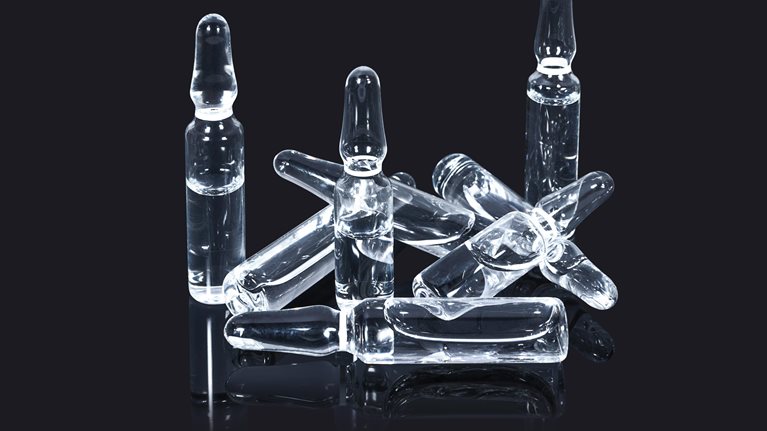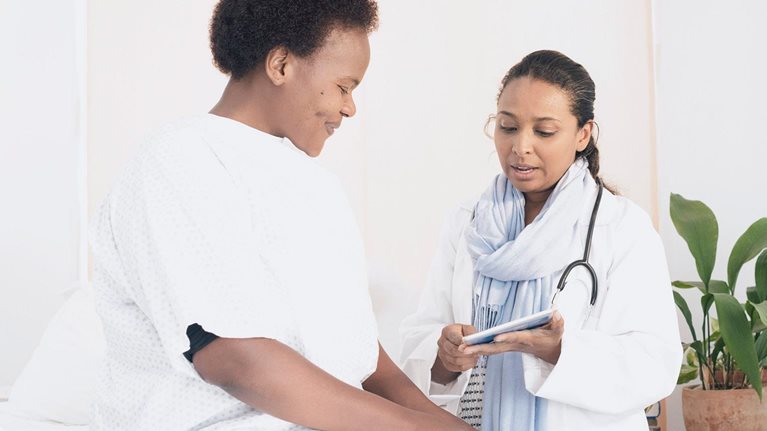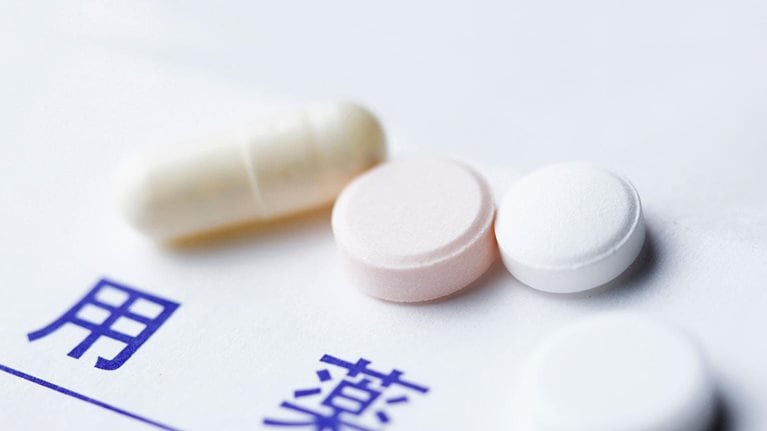The demand for biologics—which target specific pathways and cells in challenging therapeutic areas, such as cancer and rare diseases—is increasing. Thanks to the introduction of new modalities such as mRNA, biologics are expanding the range of treatments available to patients and healthcare professionals. However, the high development costs of these drugs often make affordability an issue. Biosimilars offer access to a wide array of comparable treatments at a lower cost, helping both patients and healthcare systems to save money and freeing up resources that can be reallocated to other areas of patient care.
What’s more, upward of 55 blockbuster drugs, with peak sales above $1 billion, are set to lose exclusivity in the next ten years. Competition among biosimilar companies is therefore likely to increase. In this context, being early to launch while keeping development costs as low as possible will be a precondition for success with biosimilars. But as biosimilars target increasingly complex molecules and technological platforms, R&D spending will probably rise. That will require an even tighter focus on costs to make businesses sustainable. Below, we highlight the opportunities ahead and identify three steps leaders can take to accelerate R&D time lines, reduce costs, and successfully position their organizations over the next ten years.
Entering the next wave of growth
In an earlier article, we examined the impressive growth in biosimilars from 2015 to 2020 and outlined the key strategic considerations for the next wave of growth.1 McKinsey’s market forecast model for biosimilars indicates that double-digit global growth rates will continue for the next few years, though not at previous levels. By 2030, the global biosimilar market could be worth $74 billion—more than three times today’s market value (Exhibit 1).

The US market has seen the fastest growth in biosimilars, with a CAGR of 97 percent from 2015 to 2021, compared with 48 percent in Europe and 39 percent in the rest of the world. Although projections to 2025 show a lower rate of growth, the United States is expected to stay in pole position, with a CAGR of 26 percent. Europe and the rest of the world follow, with 8 and 16 percent, respectively.
Our analysis indicates that by 2032, the more than 55 blockbuster drugs that will lose exclusivity in the United States and Europe will collectively have more than $270 billion in expected peak sales. By 2025, 19 global blockbuster brands are set to lose exclusivity. From 2026 to 2032, the pace quickens, with 39 blockbusters set to lose it. This group includes at least five megabrands with annual sales exceeding $10 billion (Exhibit 2).

As more companies enter this attractive market, speed to launch becomes more important. A McKinsey analysis of the three top-selling biosimilars for a range of molecules in several markets confirmed that early entrants obtain a large share of the market.2
Despite the industry’s growth prospects and dynamism, intense competition and potentially low returns have discouraged some companies, which have reduced their activity levels. In 2018, for instance, Boehringer Ingelheim announced that it would exit European markets and focus on launching its biosimilars in the United States. In the following year, Pfizer announced that it would drop five preclinical biosimilar projects and reallocate the funding to late-stage programs.
Success in biosimilars depends on managing costs as well as accelerating launch. McKinsey’s analysis indicates that a typical biosimilar costs $100 million to $300 million to develop and takes six to nine years to go from analytical characterization to approval. Clinical trials account for more than half of both budgets and time lines. Companies need to build more advanced R&D capabilities to prevent time lines and costs from increasing further as the industry progresses from producing relatively simple molecules in microorganisms to deriving recombinant proteins from mammalian cells and developing monoclonal antibodies.
Meanwhile, the probability of success remains low, especially in preclinical phases: an average 53 percent success rate across the US, European, and Japanese markets. These rates vary considerably by therapeutic area—43 percent in oncology but only 8 percent in immunology, for instance. Nonetheless, it is important to note that most of the failures result from decisions to stop projects for strategic reasons, such as a change in a company’s direction or an increase in competition, not from clinical factors. Success rates also don’t take into account the need to repeat projects (such as redoing clinical trials) after initial failures. That obviously affects both overall costs and time lines (Exhibit 3).

Our research and conversations with industry experts have helped us identify three areas in which leading biosimilar companies must act to accelerate development time lines, reduce costs, and deliver superior returns on investment.
1. Transform R&D processes through digital technologies
Companies have scope to pursue digital innovation at several points (such as the expression system) in drug development, if the need for similarity can be met and the new processes produce a molecule that can interact with the desired receptors. Digitization is still in its early stages in the biosimilar industry. But some companies have already implemented use cases involving process automation or robotics technologies (such as plate readers and autosamplers) that allow them to run multiple experiments in parallel and to standardize processes to prevent deviations and reduce overall costs.
Less mature use cases being trialed in the industry include in silico modeling and forecasting. Some companies, for example, use digital twins to simulate wet experiments for optimizing elements such as media selection, fermentation process parameters, stability, and analytical methods. Other emerging use cases include real-time batch monitoring, data integration with automated data capture and feeds to a central system, and knowledge generation and management.
Biosimilar companies implementing digital initiatives have had early successes that augur well for their long-term impact. One company launched its digital transformation with ten use cases implemented in three waves. The first involved laying digital foundations, such as the data backbone strategy, the IT architecture, and governance. The second involves early steps, in automation and robotics, that are expected to deliver quick positive results. In the third wave, the company plans to implement more advanced digital use cases, such as in silico modeling. When this transformation—on top of the gains already obtained by standardizing processes and reducing costs—is complete, it is expected to cut time lines from transfection to IND (investigational new drug) applications by 30 to 50 percent and to improve efficiency by more than 40 percent.
2. Monitor the industry landscape and prepare for change
As more biosimilars were launched over the past decade, regulatory guidelines have evolved. Different regulatory agencies take slightly different approaches. Looking forward, we expect to see changes in two major areas—Phase III trials and interchangeability studies—that could have a profound impact on industry dynamics.
Phase III trials
Phase III trials are not mandated by the US Food and Drug Administration (FDA) or the European Medicines Agency (EMA) as a condition for approving biosimilars. Yet they are still conducted widely and are required if there is residual uncertainty about the efficacy and safety of a biosimilar as compared with its reference product. However, when robust pharmacokinetic (PK) and pharmacodynamic (PD) data support assertions that the biosimilar and the reference product are clinically similar, companies can request a waiver of Phase III studies. Each case is assessed on its own merits.
In the case of Coherus’s pegfilgrastim biosimilar, for example, the FDA waived Phase III trials for submissions and accepted Phase I data as sufficient. It also waived Phase III trials for insulin biosimilars if robust PK and PD data were available. In the United Kingdom, the Medicines and Healthcare products Regulatory Agency (MHRA) recently removed Phase III trial requirements for all biosimilars. Our conversations with industry leaders and experts suggest that the FDA and EMA could follow suit in the medium or long term. Incremental changes could also affect certain product types or therapeutic areas. In any event, the removal of Phase III trial requirements for biosimilars, if it comes to pass, could halve R&D costs and significantly accelerate development time lines.
Interchangeability studies
Developments in analytical sciences have enabled the use of more advanced approaches and applications in biosimilarity assessments. Interchangeability requirements will probably be reviewed, and clinical trials may no longer be necessary for a proposed biosimilar if a comparative analytical assessment supports a demonstration of “highly similar.” That change could have a considerable impact on the industry’s dynamics. Lower development costs and shorter time lines could make the market more attractive to new entrants, such as generics companies, and the combination of lower development costs and increased competition would probably exert downward pressure on prices.
Biosimilar companies should note early signs of shifts in the industry landscape, develop a range of contingency plans, and build the agility to adjust rapidly and reallocate resources as needed.
3. Strengthen the foundations by enhancing the R&D operating model
Biosimilar companies can enhance their R&D operating model in three main areas: processes, outsourcing, and talent allocation. Let’s look at each.
Process optimization can help companies not only to accelerate time lines and cut costs but also to promote collaboration, increase the focus on key processes and bottlenecks, and improve ways of working more broadly. Process optimization begins with outlining the critical path—the sequence of steps needed to develop a product. Acceleration or delay in any step (such as clone selection for cell line development in biologics) on the critical path will immediately affect development time lines for the whole process. Next, companies must identify interdependencies among processes. Finally, each process should be evaluated in detail to see whether the critical path could be accelerated and, if so, how.
This approach may involve starting some steps earlier. That could, for example, involve beginning work on optimizing downstream processes before the upstream equivalent is complete or eliminating selected processes, such as intermediate scale-up steps. Other possibilities include running processes in parallel rather than sequentially (say, pilot experiments to test different conditions at the same time) or standardizing processes—for instance, following a platform formulation approach to avoid creating new processes from scratch for each product.
Outsourcing is truly effective when it allows a company to focus on its distinctive capabilities and to contract out more standard work to qualified third parties. In this way, the company can reduce time lines, spread costs, and maximize its responsiveness to changes in demand or capacity constraints. These partnerships can be confined to specific activities—for example, the outsourcing of clinical trials to contract research organizations (CROs)—or span the entire process of developing an asset.
As more complex molecules lose their exclusivity in the next few years, biosimilar companies may need to pursue new outsourcing models to access advanced capabilities—for example, the sophisticated analytics modeling techniques that can predict the potential outcome of experiments or procedures and reduce the number and cost of likely failures. Flexible partnerships also help companies gain access to additional capabilities at peak times, so that speed isn’t compromised. With such needs in mind, some companies are integrating forwardly or backwardly along the value chain or using hybrid models combining insourcing with partnerships. Teva, for instance, developed denosumab, filgrastim, and epoetin in-house, but partnered with Celltrion for trastuzumab and rituximab, with Alvotech for adalimumab and ustekinumab, and with Bioeq for ranibizumab.
Talent allocation is critical for an industry, such as biosimilars, in which knowledge and expertise are scarce. McKinsey research shows that dynamic talent allocation models can help companies match scarce skills with high-priority tasks, improve people development, and make the business more responsive to change.3 In a “flow to work” model, for instance, some employees are assigned to a flexible, skills-based pool rather than to a specific function or region. They are then deployed to the activities or projects that most need their skills, whether on a full- or part-time basis. That approach enables individuals to broaden their experience and organizations to rapidly share and act on information in a fast-changing environment.
With transformative possibilities on the horizon, biosimilar companies should consider their strategic implications. For some, that could mean building capabilities to develop biosimilars for the more complex products going off patent in the near future; for others, preparing to speed up the pace of launch. For many, it will involve keeping a close watch on developments and planning responses to a range of scenarios, from regulatory changes to price reductions and industry commoditization. Although the priorities will differ from company to company, accelerating R&D, reducing costs, and improving productivity are likely to figure in any effective biosimilar strategy.


